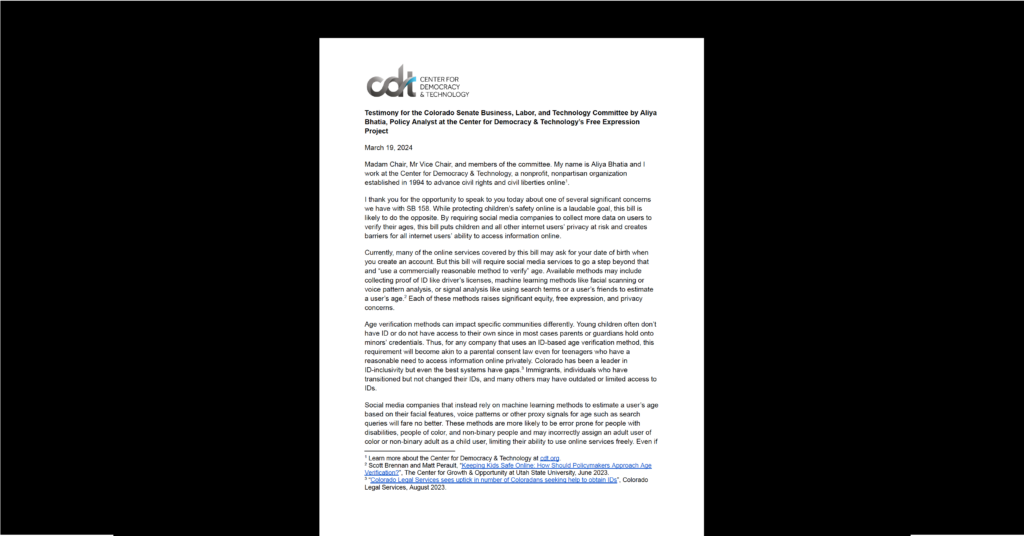Keeping Kids Safe Online Report Highlights Usual Suspects: Education, Parental Empowerment
Today, the Online Safety and Technology Working Group (OSTWG) released its final report on the current status of online child safety. Created by Congress in June 2009, the OSTWG was tasked with evaluating industry efforts to promote online safety and to provide parents with the necessary tools to help their children enjoy a safe and educational Internet experience; the OSTWG also examined the issues surrounding Internet-based crimes involving children. My colleague John Morris served on the year-long working group effort.
The OSTWG report joins a long line of online child safety reviews in concluding that the most effective way to keep kids safe online is to teach them how to navigate the Internet safely. This report highlights the need for integrating the use of the Internet and emerging technologies into school curricula and recommends that, rather than attempting (but generally failing) to ban social networking sites or even the Internet from the classroom, schools should incorporate digital media literacy into children’s lessons from pre-Kindergarten onwards.
CDT applauds the OSTWG’s conclusions that education and the use of parental empowerment tools remain the best way for parents to create a comfortable online environment for their children. Privacy advocates, industry, and law enforcement could not reach a compromise on the issue of data retention, and CDT remains significantly concerned about the privacy implications of proposals that would force all interactive web sites to keep logs of their users’ online activities. But it is gratifying to see, among all concerned parties, a shift away from reliance on the “fear-based approach” to Internet safety – which only serves to frighten parents and fails to give children any resources to respond to unsafe situations – and toward an emphasis on the positive role that the Internet can play in children’s lives.


